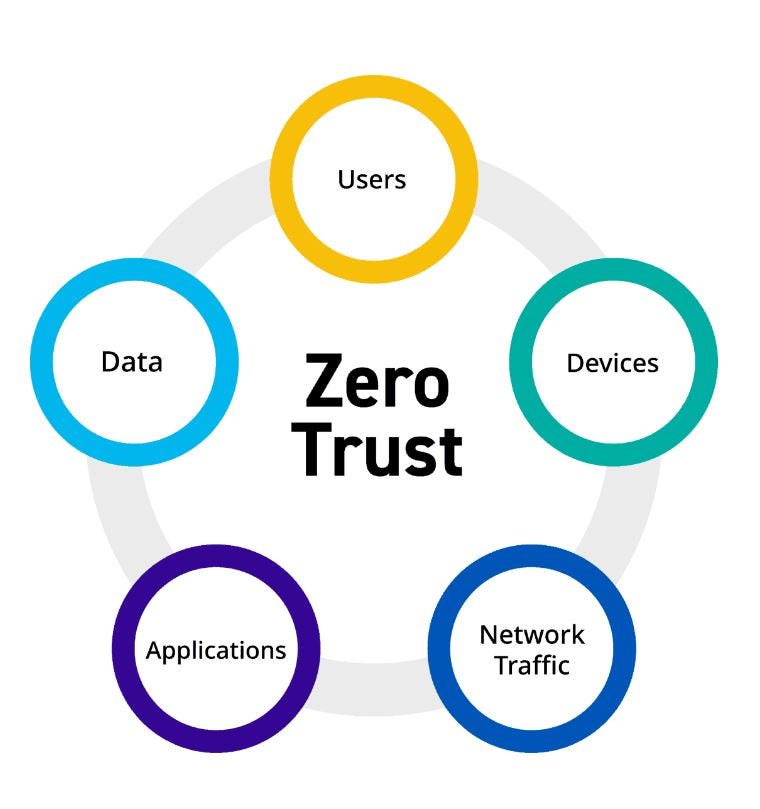This content originally appeared on Level Up Coding - Medium and was authored by Subash S
On a typical day, when traffic was light and workloads were minimal, two pods engaged in a conversation about their environment’s security posture. They discussed how to protect themselves from both internal and external attack surfaces.

Although seemingly unrelated, their conversation highlighted the importance of compliance and regulations, as well as the need to ensure that peak traffic originates from trusted sources. After all, isn’t that their right? They concluded that they should never trust requests from unauthorized sources. So, how can this be achieved?
Pod A suggested, “The solution is that we should be in a Zero Trust network.”
“Zero Trust? That means a network trusted by no one?” Pod B asked.
Pod A explained, “No, think of it this way, the core principle of the Zero Trust security model is ‘never trust, always verify,’ which means that users and devices should not be trusted by default, Zero Trust is a pragmatic security model that assumes no user, device, or application, whether inside or outside the network should be trusted by default. Instead, every access request must be verified and authenticated before access to resources is granted.
A Zero Trust network evaluates all actions and resources in real-time to minimize the risk of unauthorized access to business data and sensitive resources. This approach involves continuous monitoring, strict access controls, and verifying user identities to safeguard data and applications. It’s about taking steps to protect resources by understanding the necessary boundaries and acknowledging that no system is 100% secure.”
Pod B feeling more confident, asked to elaborate further;
Pod A continues:
When two components don’t need to communicate, they shouldn’t be able to, even when residing within the same network segment. You can accomplish this by authorizing specific flows between the components. By eliminating unnecessary communication pathways, you are applying least privilege principles to better protect critical data.
You should think of Zero Trust concepts as additive to your existing security controls. By applying Zero Trust concepts in accordance with the organizational value of the system and data being protected, you can ensure that the benefits to your business are commensurate with the effort. Here are the Core principles of Zero trust architecture(ZTA);
- Verify and authenticate
- Least privilege access
- Micro-segmentation
- Continuous monitoring and analytics
- Automation and orchestration
- Authorization
Pod B then asked, “How complex is the implementation of this approach?”
Pod A added, “Let me explain. Implementing these principles requires a comprehensive approach that combines technology, processes, and people to achieve a zero trust mindset and build a resilient security posture. Traditional network security relies on a secure perimeter, where everything within is trusted and anything outside is not. But Zero trust emphasizes the importance of strong identification and authentication for principals of all types, including users, machines, and devices, hence the implementation requires careful planning and organized effort. Here are the challenges and complexities”;
- Cultural Shift: Transitioning to Zero Trust requires a fundamental change in how security is perceived and implemented across the organization. It involves breaking away from the traditional perimeter-based security model and embracing a mindset of continuous verification and least-privilege access. This can be challenging as it requires buy-in from all stakeholders and changes in processes and policies.
- Complex Infrastructure: Implementing Zero Trust involves deploying and integrating various security technologies, such as identity and access management (IAM), multi-factor authentication (MFA), endpoint security, and network segmentation. This can be complex, especially in environments with a mix of legacy and modern systems.
- Comprehensive Visibility: Achieving Zero Trust requires comprehensive visibility into all network traffic, users, devices, and applications. Organizations must deploy advanced monitoring and analytics tools to detect and respond to threats in real-time. This can be resource-intensive and may require significant investment in infrastructure and personnel.
- Scalability: As organizations grow and evolve, their security needs change. A Zero Trust model must be scalable to accommodate new users, devices, and applications while maintaining security standards. This requires careful planning and management to ensure that security measures are not compromised.
- User Experience: Implementing strict access controls and continuous verification can impact user experience. Organizations must balance security requirements with usability to ensure that users can access necessary resources efficiently without being hindered by security measures.
- Cost and Resources: Transitioning to a Zero Trust model can be costly in terms of both financial investment and human resources. Organizations must allocate budgets for new technologies, training, and ongoing maintenance to ensure the success of their Zero Trust initiatives.
Despite these challenges, the benefits of implementing a Zero Trust security model are substantial like as I explained you earlier. By eliminating implicit trust and continuously verifying and authenticating access requests, organizations can significantly reduce the risk of data breaches and improve their overall security posture.
Pod A concluded, “Moving to a Zero Trust security model is a strategic move that enhances our ability to protect critical resources and data. It requires careful planning and execution, but the increased security and resilience against modern threats make it worthwhile.”
Zero Trust Network - A conversation that need to be heard was originally published in Level Up Coding on Medium, where people are continuing the conversation by highlighting and responding to this story.
This content originally appeared on Level Up Coding - Medium and was authored by Subash S
Subash S | Sciencx (2024-08-25T15:16:30+00:00) Zero Trust Network – A conversation that need to be heard. Retrieved from https://www.scien.cx/2024/08/25/zero-trust-network-a-conversation-that-need-to-be-heard/
Please log in to upload a file.
There are no updates yet.
Click the Upload button above to add an update.
